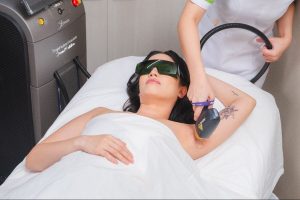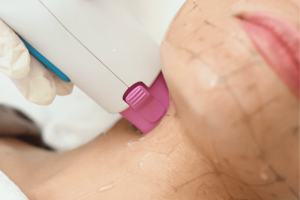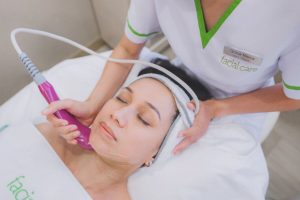
Acne 101: Understanding Different Types and Causes
Acne isn’t just about the occasional breakout—it’s a complex skin condition that affects millions worldwide. From pesky whiteheads to deep, painful cysts, acne comes in many forms. Understanding its causes is the first step to clearer skin. Let’s break it down: the types of acne, what causes acne, and the best ways to treat it—including expert-backed solutions at Facial Care Centre (FCC).
Types of Acne
Acne can be broadly categorized into non-inflammatory and inflammatory types. Knowing the difference helps you choose the right treatments for your skin.
Non-Inflammatory Acne
This type doesn’t involve swelling or redness, but it can still be stubborn.
- Whiteheads (Closed Comedones): Tiny white bumps form when pores are clogged but remain closed. These are often the result of trapped oil and dead skin cells.
- Blackheads (Open Comedones): When a clogged pore opens, its contents oxidize, turning dark. That black dot isn’t dirt—it’s oxidized oil. Blackheads are often more persistent because the open pore is exposed to air.
Inflammatory Acne
This type involves swelling, redness, and sometimes pain due to bacteria and inflammation.
- Papules: Small, red bumps that feel tender due to inflammation inside the pore. They are often an early sign that acne is progressing.
- Pustules: Like papules, but filled with pus, giving them a white or yellow center. These can be tempting to pop, but doing so can lead to scarring.
- Nodules: Large, deep, painful lumps that don’t contain pus but can last weeks. They form deeper under the skin and often require professional treatment.
- Cysts: The most severe form—large, pus-filled lumps that can lead to scarring. Cysts are soft to the touch and can be painful; they often result in long-term skin damage if not treated correctly.
What Causes Acne?
Acne isn’t caused by just one thing—it results from a mix of internal and external factors.
Internal Factors
- Excess Sebum Production: Overactive oil glands lead to clogged pores. This is often influenced by hormones and genetics.
- Hormonal Changes: Puberty, menstruation, pregnancy, and PCOS can trigger breakouts. Fluctuations in androgens can stimulate excess oil production.
- Bacteria: Cutibacterium acnes thrives in clogged pores, causing inflammation. When this bacterium multiplies, it triggers immune responses that lead to redness and swelling.
- Genetics: If your family has a history of acne, you may be more likely to experience it. Genetic factors influence oil production, skin cell turnover, and inflammatory responses.
External Factors
- Skincare & Makeup: Using comedogenic (pore-clogging) products can worsen breakouts. Ingredients like mineral oil and certain silicones can trap bacteria in the pores.
- Diet: High-sugar or processed food can spike insulin levels, which may worsen acne. Some research suggests dairy products can also contribute to breakouts.
- Stress: Increased cortisol can stimulate oil production, leading to breakouts. Stress can also exacerbate existing acne by increasing inflammation.
- Environment: Pollution, dirt, and humidity can clog pores and irritate the skin. Long exposure to heat or wearing tight masks (maskne) can also trigger flare-ups.

How to Get Rid of Acne: Best Treatment Options
Treating acne requires a personalized approach. What works for one skin type may not work for another. Here’s what Facial Care Centre offers to help you achieve clear, healthy skin:
Acne Control Treatment
Designed for mild to moderate acne, this treatment features deep cleansing and exfoliation to:
- Unclog pores and remove dead skin buildup.
- Reduce oiliness and prevent new breakouts.
- Improve skin texture for a smoother, clearer complexion.
- Reduce redness and inflammation.
Deep Acne Clarifying Treatment
For those with stubborn, moderate to severe acne, this treatment targets deeper breakouts with:
- Advanced exfoliation techniques to clear pores.
- Anti-inflammatory products to soothe irritation and calm inflamed skin.
- Post-acne scar reduction to even out skin tone.
- Customizable solutions depending on whether active acne or scarring is the primary concern.
Diamond Ultra Peel
If acne has left behind dark spots or rough texture, this treatment uses microdermabrasion to:
- Gently exfoliate dead skin cells.
- Lighten post-acne marks.
- Smooth uneven skin texture.
Why Professional Treatment Matters
While over-the-counter products can help, professional treatments offer deeper, longer-lasting results. FCC’s skincare specialists assess your skin condition and customize treatments to target your acne at its source. Combining in-clinic treatments with a proper at-home routine leads to the best outcomes. Treatments at FCC are backed by dermatological expertise, ensuring that even the most stubborn cases of acne receive the right care.
The Bottom Line: Taking Control of Your Acne
Understanding the different types of acne and what causes acne empowers you to make the right skincare choices. While lifestyle changes and at-home products help, professional acne treatments like the Acne Control Treatment, Deep Acne Clarifying Treatment, and Diamond Ultra Peel at Facial Care Centre deliver real, lasting results.Ready to achieve clear, radiant skin? Book a consultation with FCC today.





